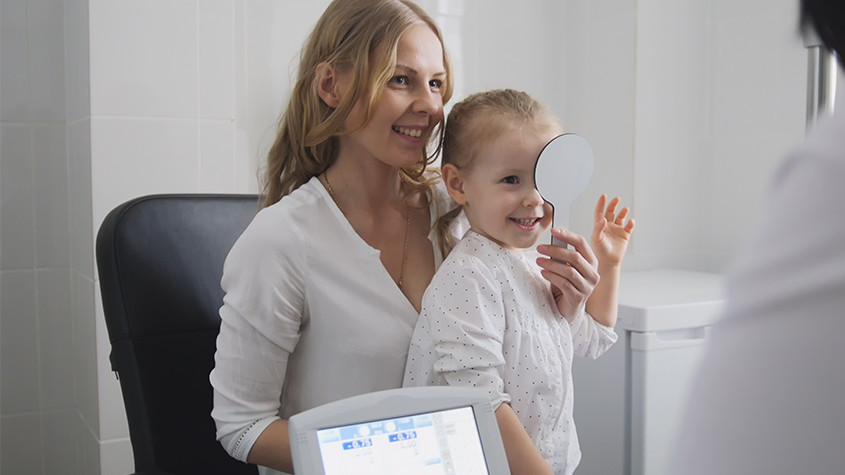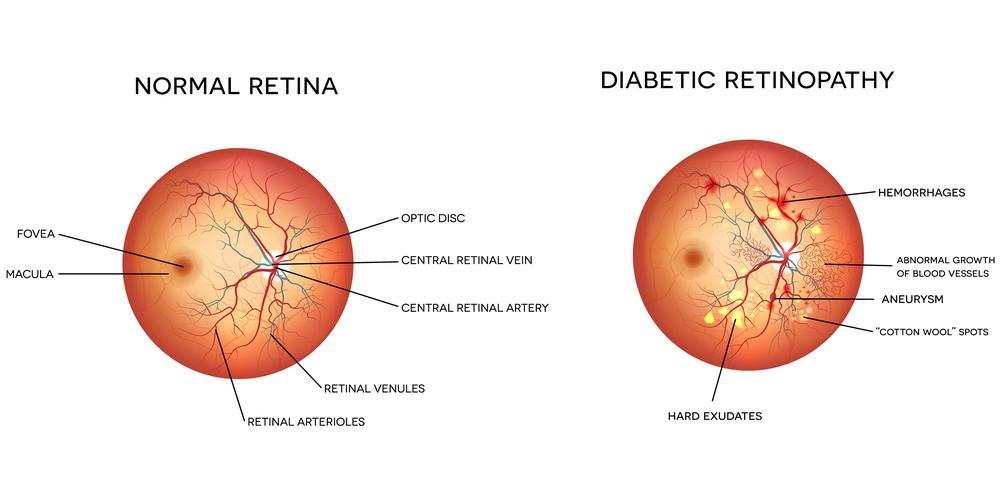Comprehensive Eye Exam

Benefits of a Comprehensive Eye Exam
A comprehensive eye exam is a thorough examination of your eyes and vision conducted by an eye doctor, such as an optometrist or ophthalmologist. It is an important part of preventive healthcare, as it can detect eye problems and diseases early, before they cause vision loss.
Here are some of the benefits of a comprehensive eye exam:
- Early detection of eye problems and diseases. Many eye problems and diseases, such as glaucoma, diabetic retinopathy, and cataracts, have no early warning signs. A comprehensive eye exam can detect these problems early, when they are most treatable.
- Improved vision. A comprehensive eye exam can also help to improve your vision by identifying and correcting refractive errors, such as nearsightedness, farsightedness, and astigmatism.
- Identification of potential health problems. Your eyes can provide valuable clues about your overall health. During a comprehensive eye exam, your eye doctor may be able to identify signs of other health conditions, such as diabetes, high blood pressure, and cholesterol.
- Peace of mind. Knowing that your eyes are healthy and that your vision is corrected can give you peace of mind.
How often should you have a comprehensive eye exam?
The frequency of comprehensive eye exams recommended for each person will vary depending on their age, overall health, and risk factors for eye problems. However, the American Optometric Association generally recommends that adults have a comprehensive eye exam every two years, or more often if they have certain risk factors, such as diabetes or high blood pressure. Children should have their first comprehensive eye exam at six months old, and then again at three years old, five years old, and before entering first grade.
Schedule a comprehensive eye exam today to protect your vision and overall health.
Specialty Contact Lens

Specialty contact lenses are designed for people with unique eye conditions or vision needs that cannot be adequately met with standard soft or rigid gas permeable (RGP) contact lenses. Some examples of people who may be good patients for specialty contact lenses include:
- People with corneal conditions such as keratoconus, pellucid marginal degeneration, or corneal scarring
- People with severe dry eye syndrome
- People with high astigmatism or presbyopia
- People who have undergone eye surgery, such as LASIK or corneal transplants
- People with irregular corneas due to trauma or disease
- People who have difficulty wearing standard soft or RGP contact lenses
Specialty contact lenses can provide a number of benefits for these patients, including:
- Improved vision correction
- Reduced discomfort
- Protection for the cornea
- Slower progression of certain eye conditions
Pediatric Eye Exam

Pediatric eye exams are essential for ensuring that your child’s vision is developing properly and that they do not have any eye problems or diseases. Early detection and treatment of eye problems is crucial, as it can help to prevent permanent vision loss.
Here are some of the benefits of pediatric eye exams:
- Improved academic performance: Good vision is essential for learning and success in school. Children with vision problems may have difficulty reading, seeing the whiteboard, and tracking moving objects. A pediatric eye exam can identify and correct any vision problems, which can help your child to perform better in school.
- Early detection of eye problems and diseases: Many eye problems and diseases, such as amblyopia (lazy eye) and strabismus (crossed eyes), can develop in early childhood. If these conditions are not detected and treated early, they can lead to permanent vision loss. A pediatric eye exam can detect these problems early, when they are most treatable.
- Protection against eye injuries: Children are at an increased risk of eye injuries due to their active lifestyles. A pediatric eye exam can help to identify any risk factors for eye injuries and provide your child with tips on how to protect their eyes.
- Peace of mind for parents: Knowing that your child’s eyes are healthy and that their vision is developing properly can give you peace of mind.
How often should your child have a pediatric eye exam?
The American Optometric Association recommends that children have their first comprehensive eye exam at six months old, again at three years old, and again at five years old. Before entering first grade, children should have another comprehensive eye exam. After that, children should have a comprehensive eye exam every two years, or more often if they have certain risk factors, such as a family history of eye problems or diabetes.
Diabetic Eye Exam

Diabetes can damage the blood vessels in the retina, the light-sensitive tissue at the back of the eye. This condition is called diabetic retinopathy. Diabetic retinopathy can lead to serious vision problems, including blindness, if it is not detected and treated early.
A diabetic eye exam is a comprehensive eye exam that is specifically designed to detect and monitor diabetic retinopathy. The exam typically includes a visual acuity test, a dilated eye exam, and other tests to assess the health of the retina.
Here are some of the benefits of diabetic eye exams:
- Early detection of diabetic retinopathy: Diabetic retinopathy often has no early warning signs, so it is important to have regular eye exams to detect the condition early. Early detection of diabetic retinopathy can lead to better treatment outcomes and help to prevent vision loss.
- Reduced risk of vision loss: Diabetic eye exams can help to reduce the risk of vision loss from diabetic retinopathy by detecting and treating the condition early.
- Improved quality of life: A diabetic eye exam can help to improve your quality of life by helping you to maintain good vision and avoid the complications of diabetic retinopathy.
How often should you have a diabetic eye exam?
The American Optometric Association recommends that adults with diabetes have a comprehensive eye exam at least once per year. If you have severe diabetic retinopathy or other diabetes-related eye problems, you may need to have more frequent eye exams.
If you have diabetes, it is important to schedule regular diabetic eye exams to protect your vision. Talk to your eye doctor about the best frequency for your individual needs.
Eye Emergencies

If you have a true eye emergency, call our office immediately or go to the nearest emergency room.
An eye emergency is any condition that can cause permanent vision loss if not treated immediately. Some examples of eye emergencies include:
- Chemical burns: Exposure of the eye to a chemical, such as acid or alkali, can cause severe burns and damage.
- Cuts and punctures: A cut or puncture to the eye can cause pain, bleeding, and vision loss.
- Objects in the eye: If an object gets stuck in the eye, it can cause irritation, pain, and damage.
- Eye infections: Some eye infections, such as keratitis and endophthalmitis, can cause severe inflammation and damage to the eye.
- Glaucoma attacks: A glaucoma attack is a sudden increase in eye pressure that can damage the optic nerve and lead to vision loss.
- Retinal detachments: A retinal detachment occurs when the retina, the light-sensitive tissue at the back of the eye, separates from the underlying choroid. This can cause vision loss if not treated promptly.
If you experience any of the following symptoms, it is important to seek medical attention immediately:
- Sudden, severe pain in the eye
- Vision changes, such as blurred vision, double vision, or blind spots
- Sensitivity to light
- Redness and swelling of the eye
- Discharge from the eye
- A feeling of fullness in the eye
Digital Retinal Imaging

Digital retinal imaging (DRI), also known as retinal photography, is a non-invasive diagnostic test that produces high-resolution images of the retina, optic nerve, and blood vessels at the back of the eye. DRI is used to detect and monitor a variety of eye conditions, including:
- Diabetic retinopathy
- Glaucoma
- Age-related macular degeneration
- High blood pressure
- Cholesterol
- Stroke
- Cancer
DRI is a quick and painless procedure. Your doctor will take a series of digital images of your retina using a specialized camera. The entire procedure takes only a few minutes.
DRI is a safe and effective test for people of all ages. It is especially important for people with diabetes, high blood pressure, and other chronic health conditions, as these conditions can increase the risk of eye problems.
Benefits of digital retinal imaging
DRI offers a number of benefits, including:
- Early detection of eye problems: DRI can detect eye problems early, when they are most treatable. This can help to prevent vision loss and other complications.
- Comprehensive view of the retina: DRI provides a wide-angle view of the retina, which allows your eye doctor to see more than they could with a traditional eye exam.
- Easy comparison of images: DRI images can be easily stored and compared over time. This allows your eye doctor to monitor changes in the retina and track the progression of eye diseases.
How often should you have digital retinal imaging?
The frequency of digital retinal imaging exams recommended for each person will vary depending on their age, overall health, and risk factors for eye problems. However, the American Optometric Association generally recommends that adults have a comprehensive eye exam with digital retinal imaging every two years, or more often if they have certain risk factors, such as diabetes or high blood pressure. Children should have their first comprehensive eye exam with digital retinal imaging at six months old, again at three years old, and again at five years old. Before entering first grade, children should have another comprehensive eye exam with digital retinal imaging.
Dry Eye Treatment

Dry eye is a common condition that can cause a variety of symptoms, including discomfort, redness, and blurred vision. It is caused by a lack of tears or poor-quality tears.
There are a number of treatments available for dry eye, depending on the severity of the condition and the underlying cause.
Over-the-counter treatments
Over-the-counter artificial tears are the most common treatment for dry eye. They are available in a variety of forms, including drops, gels, and ointments. Artificial tears can help to lubricate the eyes and relieve symptoms of dryness.
Prescription medications
If over-the-counter treatments are not effective, your doctor may prescribe medication to help increase tear production or improve tear quality. Prescription medications for dry eye include:
- Cyclosporine (Restasis)
- Lifitegrast (Xiidra)
Other treatments
Other treatments for dry eye include:
- Warm compresses: Warm compresses can help to loosen blockages in the meibomian glands, which are responsible for producing the oily layer of tears.
- Eyelid massage: Eyelid massage can help to stimulate the meibomian glands and improve tear quality.
- Punctal plugs: Punctal plugs are small devices that are inserted into the tear ducts to block tears from draining away. This can help to keep the eyes more lubricated.
In severe cases of dry eye, surgery may be an option. Surgery can involve creating a new tear duct or transplanting a tissue plug into the tear duct to block it.
Preventing dry eye
There are a number of things you can do to help prevent dry eye, such as:
- Avoid dry environments, such as air-conditioned rooms and airplanes.
- Use a humidifier to add moisture to the air in your home.
- Take breaks from computer and phone use.
- Drink plenty of fluids.
- Avoid smoking and secondhand smoke.